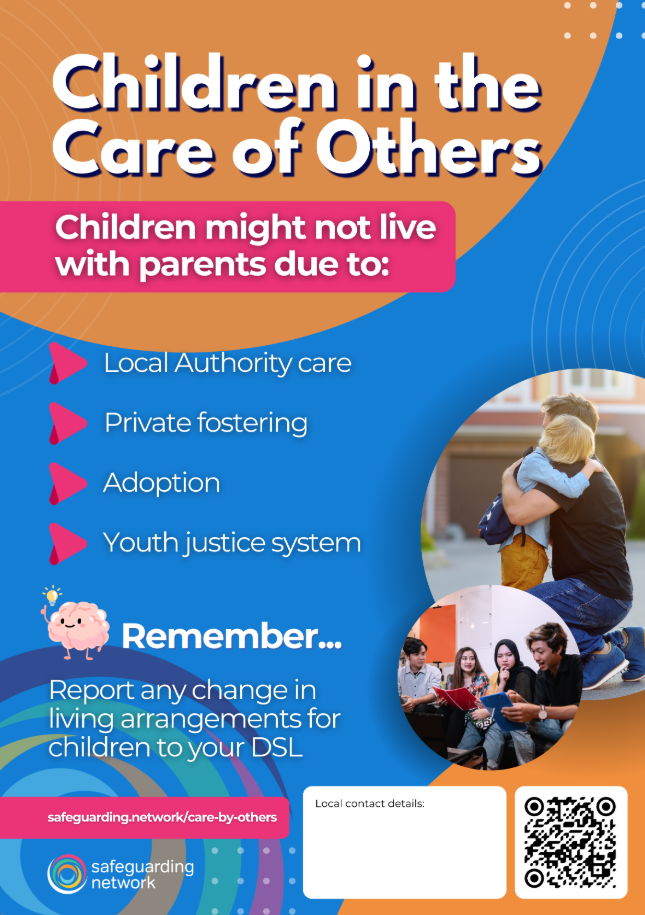Introduction
In the UK, families are diverse and have many different forms. Sometimes they find a ‘fit’ that is best for them, and children grow up in the care of grandparents, friends, ex-partners, the local authority, adopters or others. This can provide children with opportunities they otherwise would not have received but can also mean the child is vulnerable. Therefore, it’s important that we can identify the living arrangements for children in your setting.
Need more?
Thank you for visiting our resources pages. These are free to everyone as is our fortnightly safeguarding bulletin – general safeguarding information is too important to restrict. Become a member to access lots more, including training materials for you to deliver in-house on each topic in Keeping Children Safe in Education.
Sign up for FREE fortnightly bulletin.
What about training?
We can deliver training for your setting on this and other subjects via online platforms, or face-to-face in certain areas. Just get in touch to discuss your requirements.
When children are not in the care of their parents, we should try to understand how the child came to be living with a person other than their parents in the first place, and what it means for both their day-to-day experiences and their longer-term outcomes.
Definitions
- Private fostering – when it is planned for a child to live with, or discovered that a child is living with, someone who is not a close relative for 28 days or more.
- Children in the court system – the situations when a child may find themselves in the court system and the implications of this.
- Children in care – when the local authority shares parental responsibility with the parents.
- Adopted children – when children legally become the children of the adoptive parents, and the parental responsibility of the birth parents is removed.
- Children living with family or friends under no formal arrangement – these are children who are living elsewhere under ad hoc arrangements that may be new, but equally may have been established for some time and become accepted as the norm. We need to ensure that we establish what the arrangements are, how safe they are, whether they amount to private fostering, who can give consent for activities and trips etc., and what the child’s view is about the arrangement.
What to do
Settings should:
- ensure applications and registration forms are written in an inclusive way
- check who holds parental responsibility for a child
- ensure staff, especially DSLs, head teachers and administrative staff, understand the concept of parental responsibility
- ensure staff understand the range of potential legal arrangements that they may come across
- ensure staff understand the law regarding private fostering and notify the local authority about such arrangements
- anticipate potential challenges, open conversations about these with carers, and plan to reduce their impact
- provide additional support to children living with these arrangements.
Questions to ask
Do you know:
- Who the adults are that the child lives with?
- If the child is not living with their parents, why this is?
- Who can give permission for day trips/residential trips?
- Who can give consent to medical treatment?
- Who should be receiving copies of school reports?
- Are there are any restrictions on people having contact with the child, and what status these have (e.g., are they because of a court order)?
In some cases, it may be useful for you to talk to the child and their carers and construct a genogram to help identify who is related to a child and how. Also, working with a child to create an ecomap may provide a useful insight into who they see as important in their lives.
Free children in care of others poster
This free, downloadable resource raises the profile of safeguarding for your staff team. For use in staff rooms, on safeguarding boards or on the back of toilet doors, the poster includes tips, a space for local contact details, plus a link and QR codes to this resource page. Download the poster from the resources below.
DSL Training Materials
-

Children in the Care of Others Presentation
-

Children in the Care of Others - Presenter Notes
-

Handout for staff - Children in the Care of Others
-

Children in the Care of Others Quiz
-

Children in the care of others – Quiz (Answer Sheet)
-

Children in the Care of Others Scenario – Early Years
-

Children in the Care of Others Scenario – Early Years settings – DSL Information Sheet
-

Children in the Care of Others Scenario – Primary Schools
-

Children in the Care of Others Scenario – Primary Schools – DSL Information Sheet
-

Children in the Care of Others Scenario – Secondary Schools
-

Children in the Care of Others Scenario – Secondary Schools – DSL Information Sheet
-

Children in the Care of Others Scenario – 16+ / FE settings
-

Children in the Care of Others Scenario – 16+ / FE settings – DSL Information Sheet
-

Children in the Care of Others Scenario – SEND settings
-

Children in the Care of Others Scenario – SEND settings – DSL Information Sheet
-

Children in the Care of Others Scenario – Care settings
-

Children in the Care of Others Scenario – Care settings – DSL Information Sheet
Resources
-

Children in the care of others poster
-

Designated teacher for looked-after and previously looked-after children
Save time and improve your safeguarding approach…
Bite-size training materials to share with your staff every month.
Support to explore and develop your safeguarding culture.
A huge array of resources and professional experience at your fingertips.
Get in touch now for a personal tour of the site and details of membership benefits.
We look forward to working with you.


